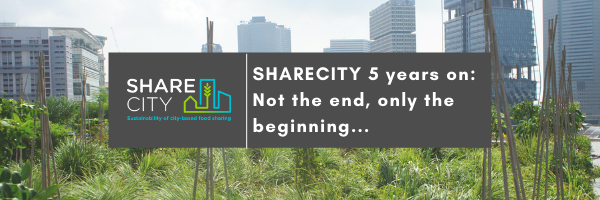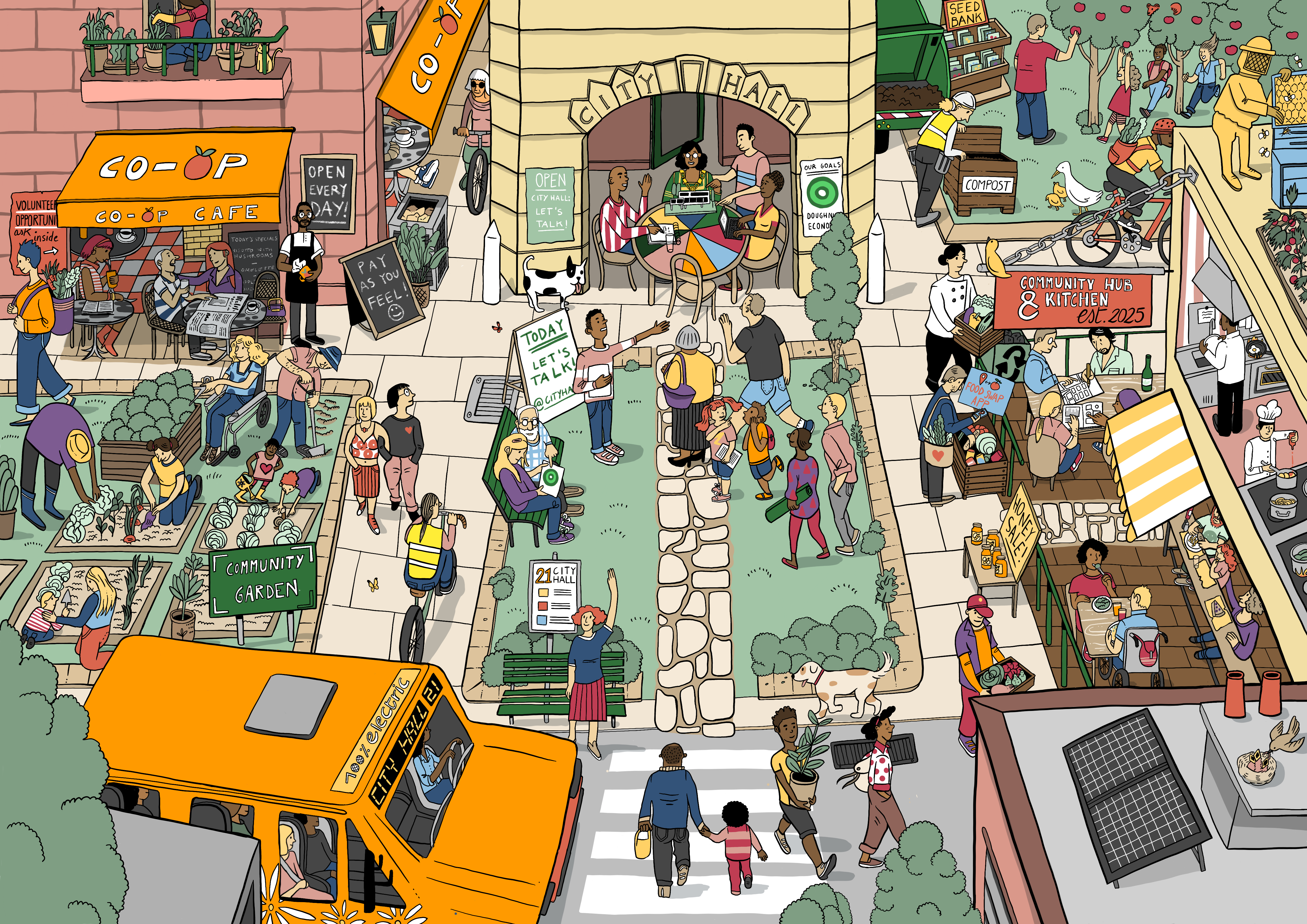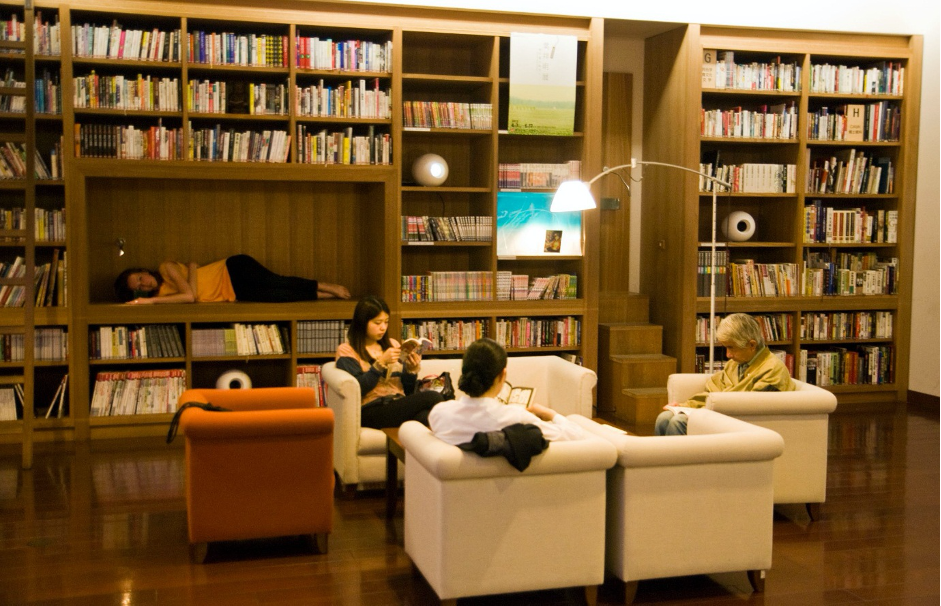What we discovered when hosting a Virtual Conference
Published by SHARECITY on the 15th October 2020.
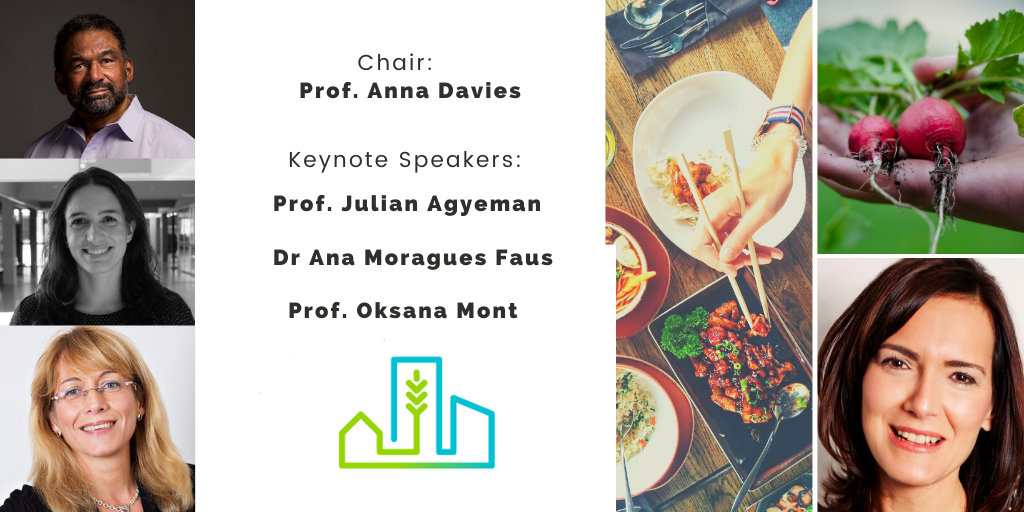
The new virtual world:
What we discovered when hosting a
Virtual Conference #SHARECITY2020
By Vanessa Lucy, Anna Davies, Alwynne McGeever & Louise Fitzgerald
from the SHARECITY Team
Hello everyone! We firstly would like to extend a big thank you to everyone who attended our #SHARECITY2020 Virtual Conference in late September. It was a huge success and wouldn’t have been possible without our dedicated SHARECITY team, talented presenters, and of course our brilliant audience – you!
If you haven’t yet viewed the conference presentations you can do so on our Virtual Conference website here.
2020 has been a challenging year for us all with the COVID-19 global pandemic and world-wide lockdowns and restrictions, but the silver lining from this is that online events have become the mainstream method for sharing and celebrating research. Not only do these events produce a fraction of the carbon emissions associated with a traditional conference, but they allow attendees to tune in from every corner of the globe, expanding the reach and accessibility of sharing our research on urban food sharing.
We want to take this opportunity to share with you, the SHARECITY community, what we have discovered through the process of running a virtual conference – including the highs and the lows (but mostly the highs)! We welcome your feedback on the event through comments on this blog post or you can complete our post-event survey here if you have not yet done so.

Thank you for attending the #SHARECITY2020 Virtual Conference!
Source: Tim Mossholder – Unsplash
What was our goal?
When the SHARECITY Research Project was being planned five years ago the idea was to have a final face-to-face conference for 100 participants here in Dublin to share our experiences and understandings. COVID-19 put an end to that of course, but as flagged above the virtual conference alternative provided opportunities to expand participation in ways that would have been impossible face-to-face. It allowed the event to become accessible for those who may not normally be able to travel to Ireland to attend a physical conference and for those with limited differential access to technology.
Due to the limited technical supports we could draw on and the range of diverse and international speakers participating, we decided the best plan would be to pre-record most of the presentations to reduce any issues associated with time zone differences and connectivity. However, we also wanted to ensure that the platform we utilised had the functionality to allow for questions to be asked of speakers – who agreed to monitor questions for the three day period of the conference – and we had one final live panel discussion to boost interaction and enhance audience participation.
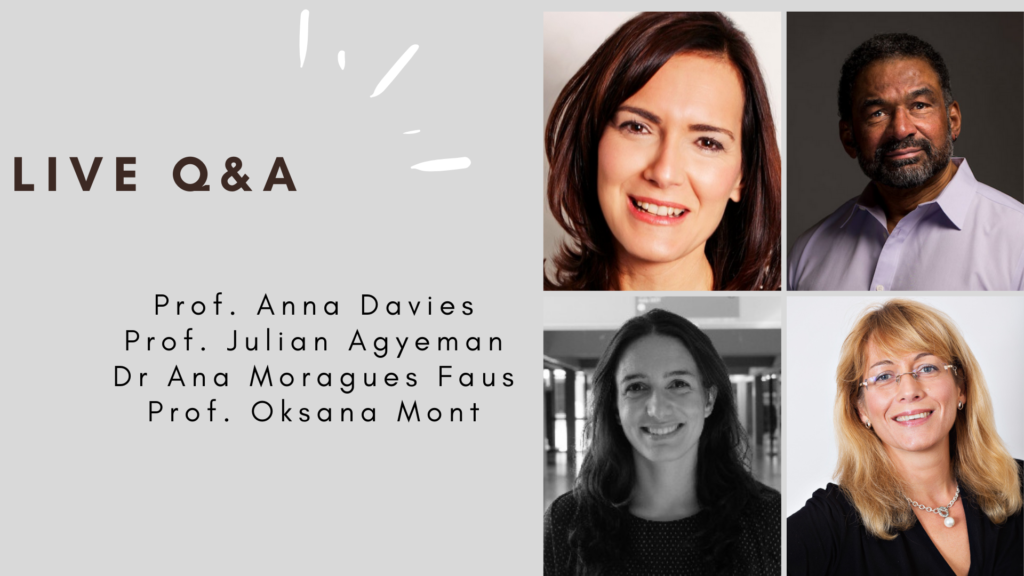
The Live Q&A Panel on Day 3 of SHARECITY’s Virtual Conference was run as a live virtual event that encouraged interaction between attendees and conference speakers. It was selected to be live at a time (1:30pm UTC+1) which was suitable across many different global time zones.
Source: SHARECITY Website
(https://sharecity.ie/virtualconference2020/day-3-governance-and-futures/)
The online platform: a learning process
After finalising the conference programme and liaising with speakers around the preparation of their presentations (which you can view here), we shifted our focus to researching how and where we could host these videos online. The quantity and quality of virtual conference hosting programmes has increased dramatically in 2020, with apps and platforms like Zoom and Microsoft Teams becoming household names.
With 20+ video presentations recorded, we were seeking a high quality video hosting programme with an interface that made attendees feel like they were at a ‘real life’ conference. We firstly undertook a detailed search, initially narrowing it down to the webinar platform, ClickMeeting, and an alternative option which included hosting the conference on our SHARECITY website through YouTube. On further investigation, we determined that ClickMeeting did not have the capacity to host the large videos our presenters were preparing – they restrict uploads to 500MB – so we decided upon the latter option by hosting the event through our SHARECITY website.
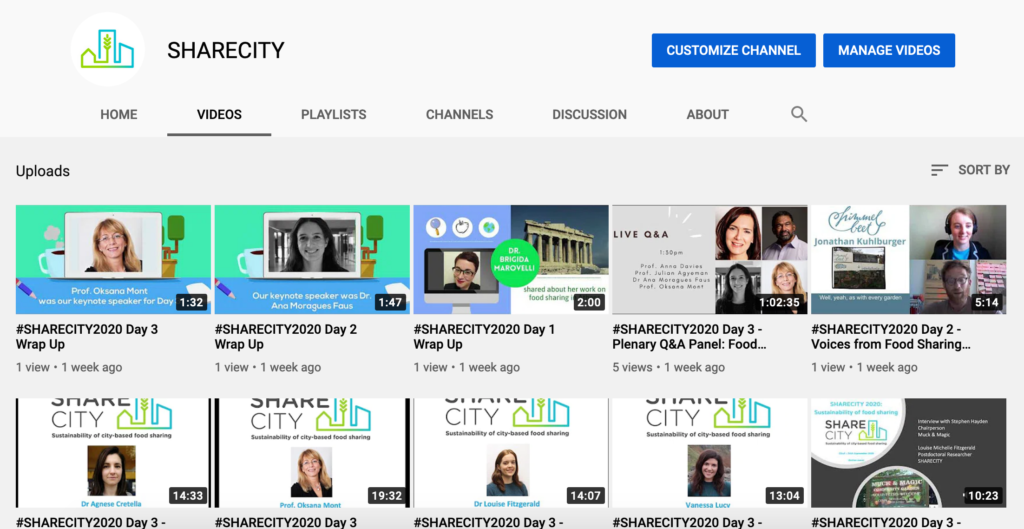
A good option for sharing virtual conference presentations is through hosting videos on YouTube and embedding the links on your own separate website.
Source: SHARECITY YouTube
(https://www.youtube.com/channel/UCPVGOXqB23eT_PU4ZQCtiEQ)
Pivot 1: Website traffic
Our Virtual Conference planning was coming along nicely, with presentations flooding in, and we were all very excited about the actual event. Two weeks before the start date we tested out our website as a hosting tool by disseminating registration details and we witnessed our website crash as traffic increased on our conference page. It appeared our website was unable to cope with more than 50 people accessing it simultaneously.
We were very concerned by this and quickly investigated our website’s bandwidth and traffic capacity by ‘stress testing’ our webpages. It turned out our website would not handle a large-scale event with the level of participation we were after – the 100 participants from our original conference plans remaining our goal – despite our website hosting package suggesting otherwise. We explored ways to address this through various upgrades but the only suggestions from technologists went beyond our budget and were not even guaranteed to resolve the issue.
It was a rapid and steep learning curve and we recommend to anyone running a virtual event on their website to investigate your website’s hosting package and software robustness early on.
Pivot 2: A new tool – Sprout Video Hosting
After more investigative work, we found the brilliant platform Sprout Video. It was able to host our large video presentation files, providing an interactive and visually appealing home page, and most importantly it passed an internet traffic ‘stress test’ with flying colours. In addition to this, it was a very affordable option with great customer service tools to help you with any issues you may have.
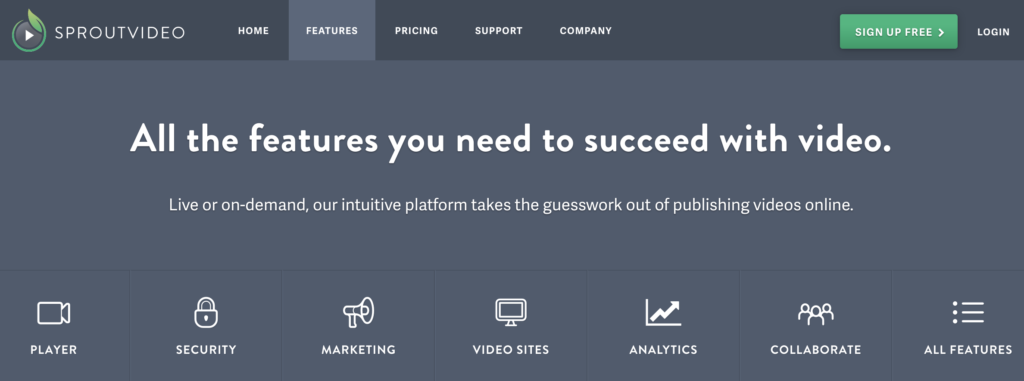
Sprout Video features – it is primarily a video hosting platform but you can also broadcast live videos directly from the platform.
Source: Sprout Video (https://sproutvideo.com/)
The Virtual Conference event
The good news is that our preparation and testing paid off and the Virtual Conference ran smoothly without any technical issues. We were joined by 448 people, from 31 countries, who viewed the videos 978 times!
Soliciting feedback from participants, viewers told us they enjoyed the flexibility our event offered, with the majority only watching a few videos they were interested in, and a minority of invested stakeholders watching the entire suite of content. Our highest number of views took place on Day 1 of the Virtual Conference, with an average of 60 views per video within 24 hours. The majority of views consistently happened after the ‘go-live’ time slot each presentation was given in our conference programme. Views per video declined over the three days, with an average of only 16 views per video on Day 3.
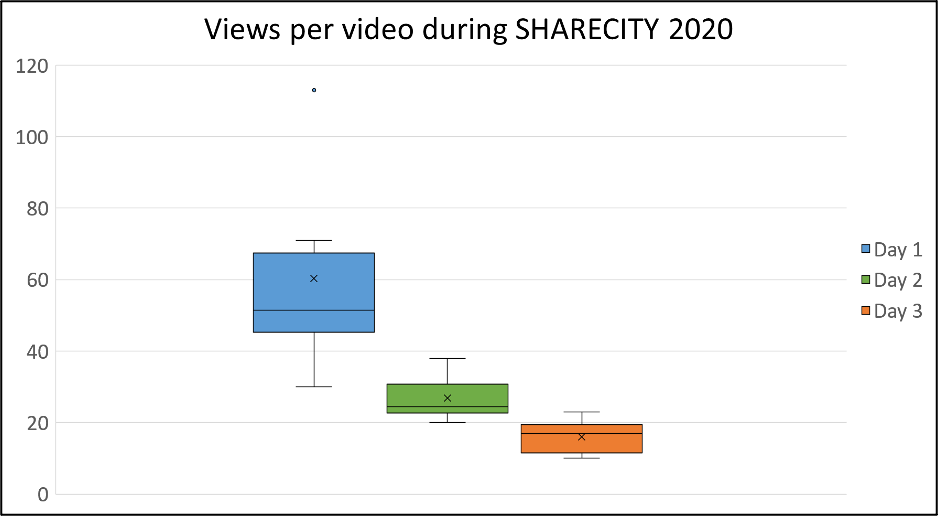
Here we see the average number of views per video decline from 60 to 16 over the three days, demonstrating the challenge of maintaining virtual engagement over multiple days. Views of Day 3 videos increased over the 2 weeks after the event, demonstrating potential to extend reach by keeping content available beyond the live times.
Source: Dr Alwynne McGeever
However, by keeping the content online for two weeks, we gained an additional 103 views on Sprout, as well as 382 views of content on Twitter and 118 views from Instagram IGTV. Our key learning from this is that in a virtual environment it is difficult to maintain reach over multiple days, so shorter online events work best if you can’t keep the content available for longer durations than the conference period. We also found that shorter videos had more views than longer ones, our videos ranged from 3 to 60 minutes in length. Content was also accessible on smart phones, which were used by 12% of our viewers.
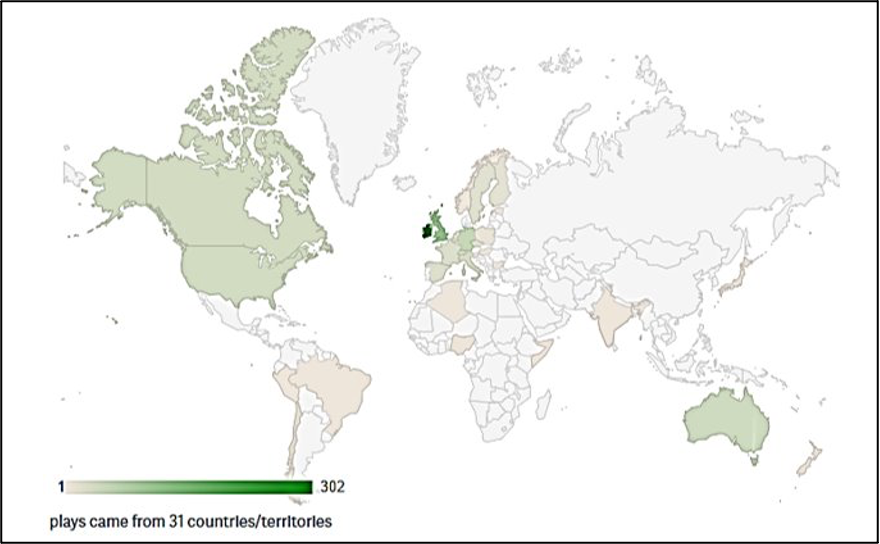
The map above shows the international reach of the #SHARECITY2020 Virtual Conference with the colour scale indicating the number of video views per country. The darker the colour the more video views from attendees located in that country.
Source: Sprout Video Analytics
What were the downsides of running a virtual event?
Of course with this new virtual world we all inhabit comes the downsides of not physically being together. Informal interactions over coffee or between sessions provide much of the value and networking of face-to-face events and this is difficult to replicate or replace.
Nonetheless, we encouraged attendees to interact with speakers by asking questions. We hosted a live Q&A panel event on Urban Food Sharing Futures where attendees could ask questions live to our 3 Keynote Speakers and Facilitator – SHARECITY Principal Investigator, Prof. Anna Davies. We also undertook live tweeting throughout the event, breaking down the findings and concepts in each presentation and showcasing the speakers background and research areas. This was a great way to share our virtual conference with those who were perhaps time poor and were unable to view all the video presentations. You can view these tweets here by using the hashtag #SHARECITY2020.
Other virtual events have utilised Zoom Breakout Rooms or ‘virtual coffee catch-ups’ to attempt to replicate those informal networking opportunities that arise from conferences. Perhaps the real life interactions cannot really be replaced, but for now these methods of communication allow us to come together in the best virtual way possible, whilst providing genuine sustainability impact through reduced emissions and food waste associated with many conference events.
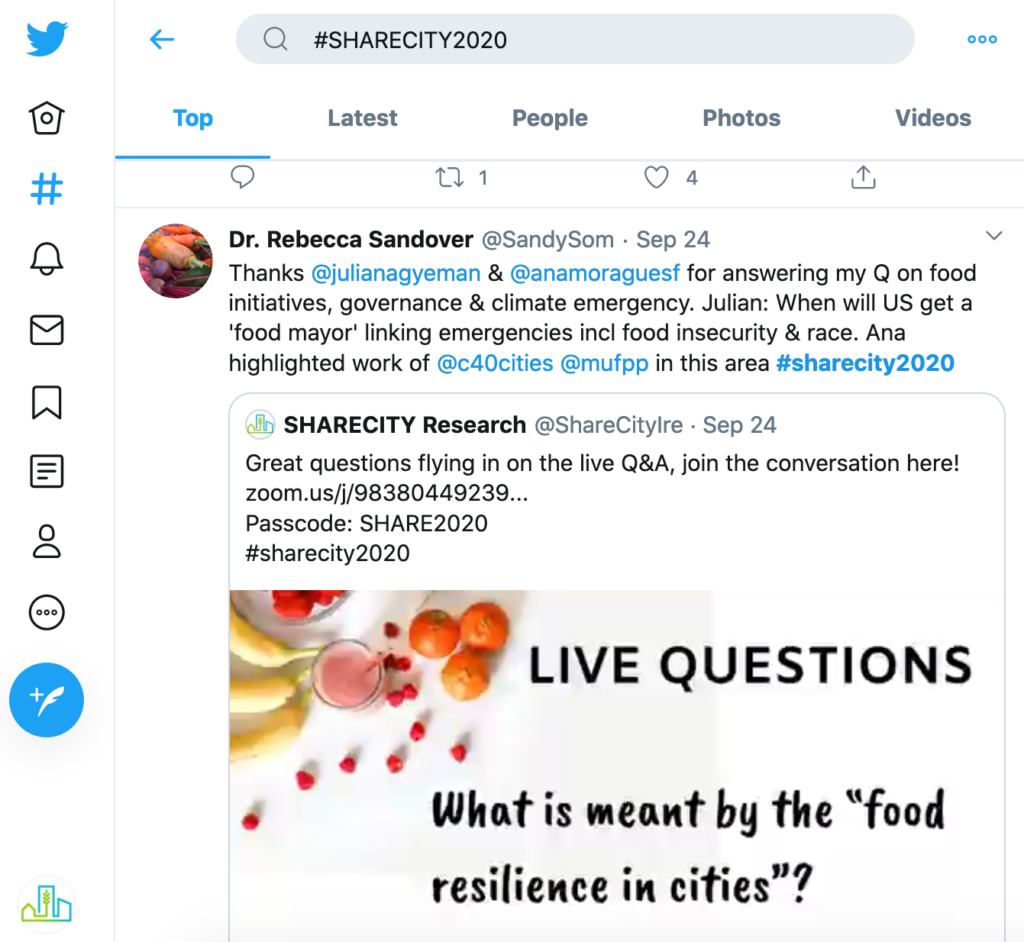
An example of live tweeting throughout the #SHARECITY2020 Virtual Conference. Live tweeting allowed us to break down the content of each presentation for easy dissemination.
Source: SHARECITY Twitter (https://twitter.com/ShareCityIre)
What does this all mean?
This experience has shown us at SHARECITY that you can run a successful and meaningful virtual event. Our absence of technical issues in the end product was a major triumph that reduced our stress levels and we hope boosted your enjoyment!
Our key learnings for others are to: choose a platform that meets your needs early and test it robustly, keep the event relatively short in duration, but allow access to the presentations to be available for longer to encourage more engagement and greater international participation, and if possible make the event free and open to a wide variety of attendees.
Closing the loop
Because of the extended duration of the conference we were unable to answer all questions posed during the live Q&A and we promised to respond to them in this blog. From the rich discussions, we had several questions that centred around COVID-19 and the impacts on food sharing. In April, May, and June this year we produced three blogs that investigated the early relationships between COVID-19 and food sharing globally and also in Ireland and the USA.
In addition, this month we will be joined by a new SHARECITY Research Assistant, Monika Rut, who recently completed her PhD with SHARECITY investigating food sharing in Singapore. Monika will be investigating COVID-19 and food sharing in detail and examining the relationships, impacts, and opportunities presented by COVID-19 on food sharing in cities across the world. She will take on-board your questions and integrate them into her research and literature investigations.
We hope sharing our highs and lows of running and managing a virtual conference will provide you with some tips and tricks as we know many are eager to learn how best to run a virtual event given this format will continue for the foreseeable future.
If you haven’t managed to view the presentations already please do so at your leisure here.
Please get in touch if you have any questions about the Virtual Conference. You can so do via email (sharecity@tcd.ie), Twitter, Facebook, or LinkedIn.
We also have a newly created Instagram account for the SHARE IT Tool Kit – please check it out and interact with us there!
Thank you, the SHARECITY Team.
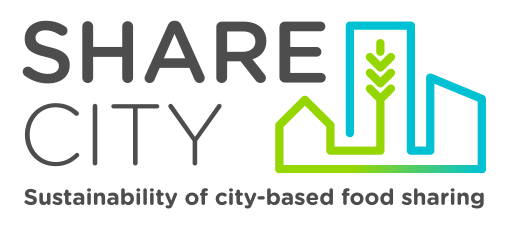
© 2015 - 2024 ShareCity | Web Design Agency Webbiz.ie

